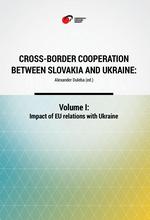The visa dialogue and the visafree regime of Ukraine with the EU: consequences for migration of Ukrainian citizens to the Slovak Republic
The visa dialogue and the visafree regime of Ukraine with the EU: consequences for migration of Ukrainian citizens to the Slovak Republic
Author(s): Nataliya Maradyk
Subject(s): Governance, International relations/trade
Published by: Prešovská univerzita v Prešove, Filozofická fakulta, Inštitút politológie
Keywords: visafree regime; liberalisation of visa regimes; migration of Ukrainian citizens to the Slovak Republic; visafree regime of Ukraine with the EU;
Summary/Abstract: Liberalisation of visa regimes between countries has been a trend of worldwide and globalisation processes at the end of the 20th and beginning of the 21st centuries. The core idea behind the liberalisation of visa regimes is the fundamental human right to freedom of movement both within a country and also abroad. The “openness” or “closed-ness” of borders for people is a particular indicator of the economic and social development of a society in general. The ultimate aim of visa regime liberalisation is visa-free travel for people. Citizens who are able to travel visa-free to most of the countries in the world have the greatest freedom of movement. According to Henley & Partner Passport Index Global Ranking, these currently are citizens of the Japan (to 191 countries), Singapore (to 190 countries), South Korea and Germany (to 189 countries), Italy and Finland (to 188 countries), Spain and Luxembourg and Denmark (to 187 countries), Sweden (to 186 countries). On the other hand, for example, citizens of Afghanistan may travel to only 26 countries without a visa (Henley & Partner 2020). As we can see, visa regimes between countries are at present mostly asymmetrical. Good examples of this asymmetry are the visa relations between Ukraine and the rest of the world, in particular the countries of the EU.
Book: Cross-Border Cooperation between Slovakia and Ukraine: Volume I: Impact of EU relations with Ukraine
- Page Range: 99-114
- Page Count: 16
- Publication Year: 2019
- Language: English
- Content File-PDF

